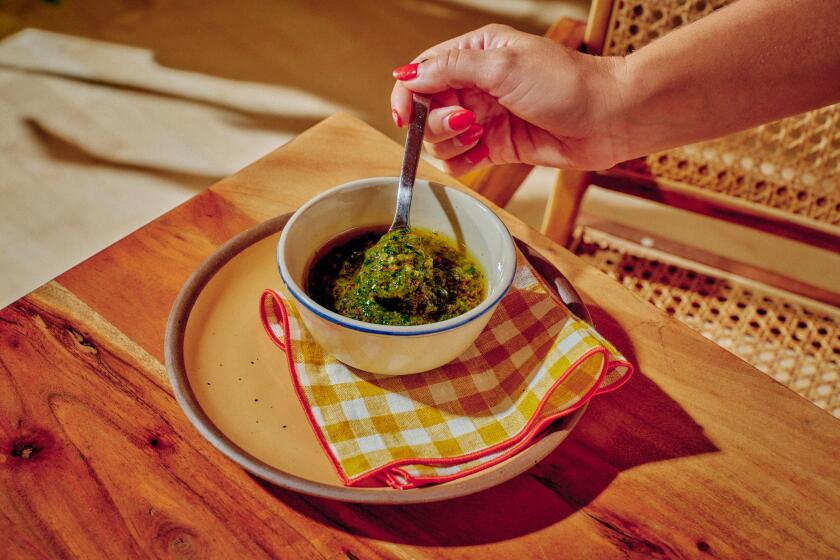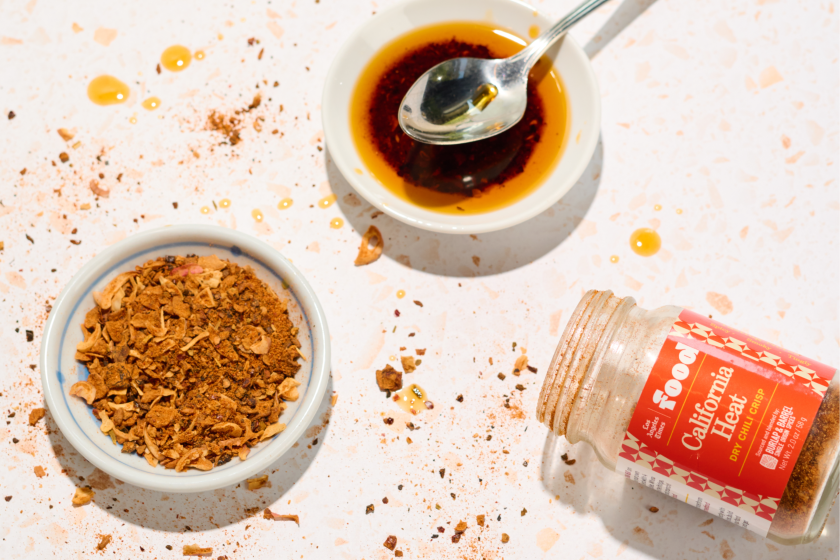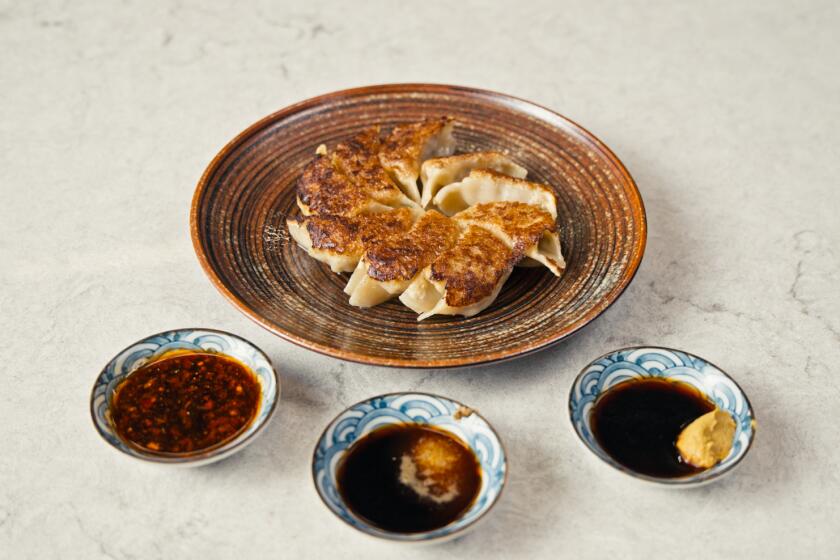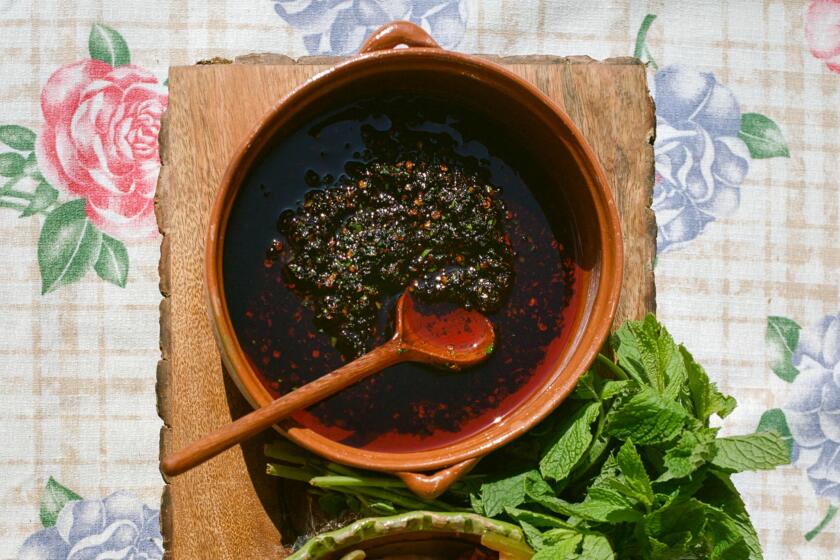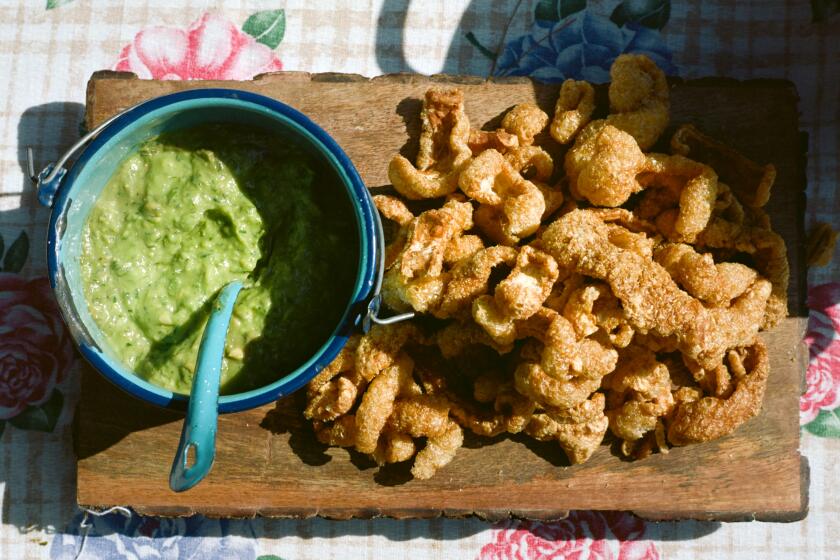Bonito flakes and konbu seaweed dashi
At the heart of so much of Japanese cooking is the fragrant broth called dashi. And at the heart of dashi are the delicate pink petals of katsuobushi, shaved flakes of dried bonito fish. When steeped with the dried seaweed called konbu, katsuobushi gives dashi its irresistible aroma and deep umami flavor. Despite being made in minutes, the stock is the foundation of many Japanese dishes -- miso soup, salad dressings, sauces for noodles, even meat stews.
From the story: Dashi, essence of Japan
Using scissors, make several crosswise cuts in the konbu. This helps to extract the flavor during cooking.
Place the konbu and 8 cups of water in a large saucepan and set it aside for 10 minutes. Place the pan over medium heat and cook until the water almost comes to a boil, then pluck out the konbu.
Keep heating the water to a boil, then remove from the heat. Add one-half cup of cold water. Wait for the liquid to cool a minute or two, then gently add the bonito flakes. Do not stir. When the bonito flakes have settled, about 3 minutes, strain them through a sieve lined with cheesecloth or paper towels. Don’t stir the stock because that will cloud the dashi. The dashi should be aromatic and have a light amber color.
Get our Cooking newsletter.
Your roundup of inspiring recipes and kitchen tricks.
You may occasionally receive promotional content from the Los Angeles Times.










